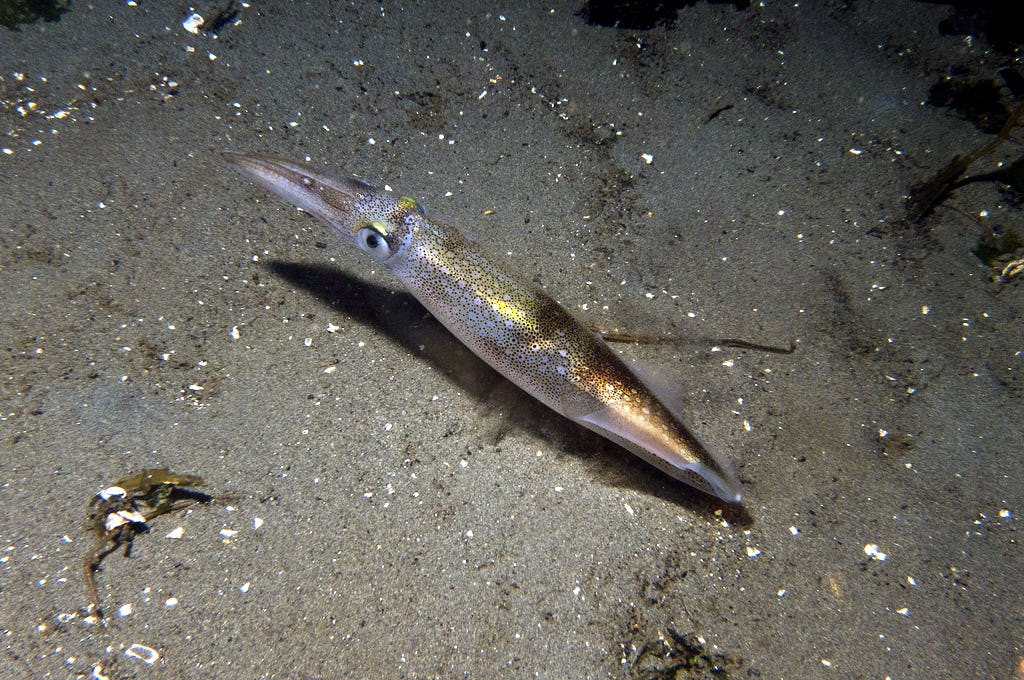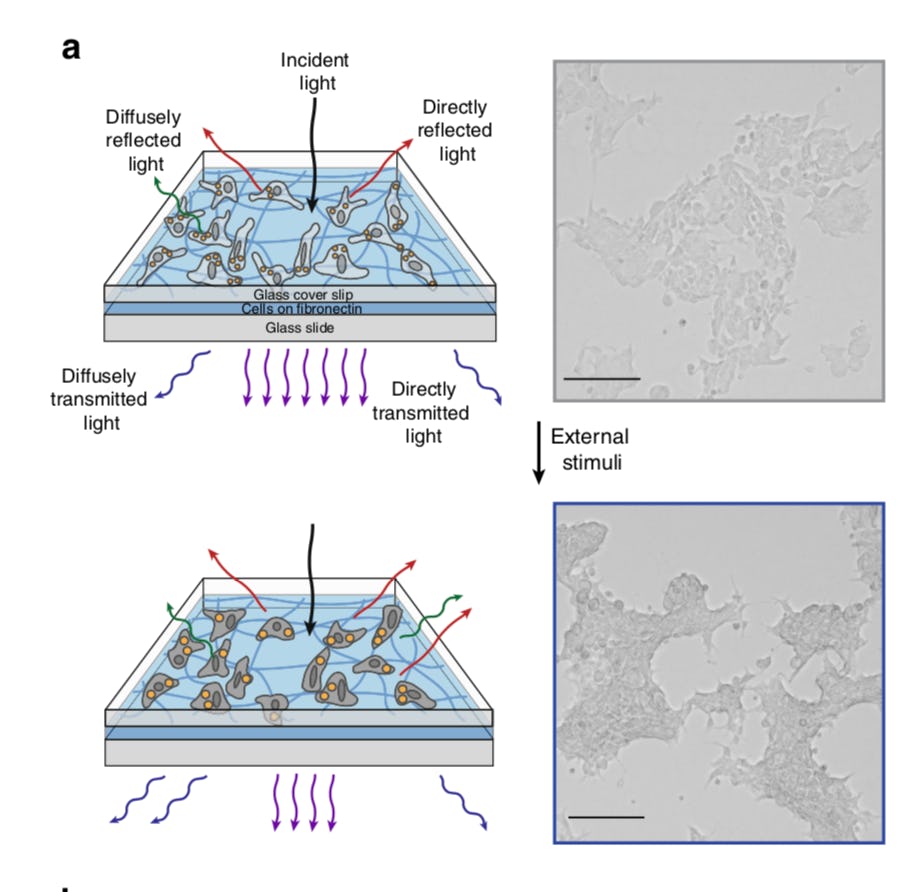
In 1897, H.G. Wells proposed humans might actually be able to become invisible in his sci-fi horror novel, The Invisible Man. Now, 120 years later, we’ve remade Wells’ classic into another movie, but we still haven’t quite figured invisibility out.
However, we are getting closer. Scientists, inspired by Wells’ story, have made the first step forward.
In the original The Invisible Man, a scientist eventually achieves invisibility by altering the skin’s refractive index – a number that describes how fast light travels through a material. Wells imagines that the scientist, Griffin, was able to change the refractive index of human skin (which is around 1.4) to match that of air, which is around 1.
That idea is based on real science. If you match the refractive index of an object and a body of liquid, like oil, you can make an object appear to vanish.
Using a protein found in a squid called the opalescent inshore squid (they’re found in the pacific from California to Alaska), scientists recently found a way to change the refractive index of human kidney cells to resemble that of their environment. They’re not quite invisible, but they do become nearly completely transparent when those cells are mixed with a salt solution.
This finding was published Tuesday in the journal Nature Communications.
Alon Gorodetsky is the paper’s lead author and an associate professor of chemical and biomolecular engineering at UC Irvine. He tells Inverse that his goal is to eventually use this technology to make human skin transparent too, which could have implications for cosmetic surgery or cell imaging. But also just because it’s cool.
“From my perspective, it's inspired by a lot of science fiction type stuff that I used to love as a kid – those kinds of fantastic concepts that even H.G. Wells was thinking about 120 years ago,” he says.

Achieving transparency – Cephalopods like cuttlefish, octopuses, and the inshore squid have cells in their bodies called leucophore cells. These can scatter the full spectrum of visible light.
Normally, these creatures look milky white, but they can also scatter the filtered light from seawater, which allows them to blend in with their environments.
In the inshore squid, leucophore cells are found on a strip on the mantle, the main portion of their bodies. When a female is threatened, she can switch the color of a stripe composed of these cells from transparent to opaque white, which can help her "avoid unwanted aggression," the authors write.
These cells can scatter light because they express a protein called reflectin A1, which creates tiny circular particles that scatter light. Gorodetsky and his team engineered embryonic human kidney cells to express that protein, which gave them these tiny, light scattering particles too.
“Our engineered human cells work almost the same way, as far as we can tell, as the natural leucophore cells in squid skin,” he says.
Importantly, the team also found a way to manipulate the transparency of these cells by changing the actual size of these light-scattering particles. Gorodetsky explains that, by adding a salt solution, they were able to make the particles swell in size, and shift in arrangement.
That allows for fine-tuning of the actual refractive index of these cells, which could allow them to blend into different kinds of environments. To test this, they placed the cells between two slides and coated each with a different concentration of Sodium Chloride (wither 117mM NaCl or 217mM).
When cells were exposed to the lower salt concentrations, the team observed that they were "visibly transparent to the naked eye." When exposed to the higher concentration, they found that the cells reflected slightly more light, and were “visibly opaque to the naked eye" but still easier to see than before.

That change means that this level of transparency is tunable, which could allow scientists to toggle between degrees of transparency, which opens up far more uses for these kinds of transparent cells.
The point of transparency – Using different kinds of techniques, scientists have already progressed to making fully transparent human organs, or see-through mouse brains by applying a detergent that strips away lipids that block light. Some scientists have already created entirely transparent, dead mice, all in the name of being able to see how the body is connected in even greater detail.
Gorodetsky’s method is manipulatable, and can be applied to one specific cell at a time, which has applications for cell imaging, he says. He also imagines these transparent cells could be used for cosmetic surgery – to help hide a scar or create different types of visual effects on the body.
The ultimate goal, though, is larger.
“We'd like to make human skin that can change its transparency, like squid skin. But that is quite a challenging and very arduous project,” he says. “We’re just at the very beginning of opening the possibility of doing it. But that's what gets me excited to go to work in the morning!”
Humans value transparency in their news, politics and social lives. But we also might soon learn to value it in our bodies too.
Abstract: Although many animals have evolved intrinsic transparency for the purpose of concealment, the development of dynamic, that is, controllable and reversible, transparency for living human cells and tissues has remained elusive to date. Here, by drawing inspiration from the structures and functionalities of adaptive cephalopod skin cells, we design and engineer human cells that contain reconfigurable protein-based photonic architectures and, as a result, possess tunable transparency-changing and light-scattering capabilities. Our findings may lead to the development of unique biophotonic tools for applications in materials science and bioengineering and may also facilitate an improved understanding of a wide range of biological systems.







